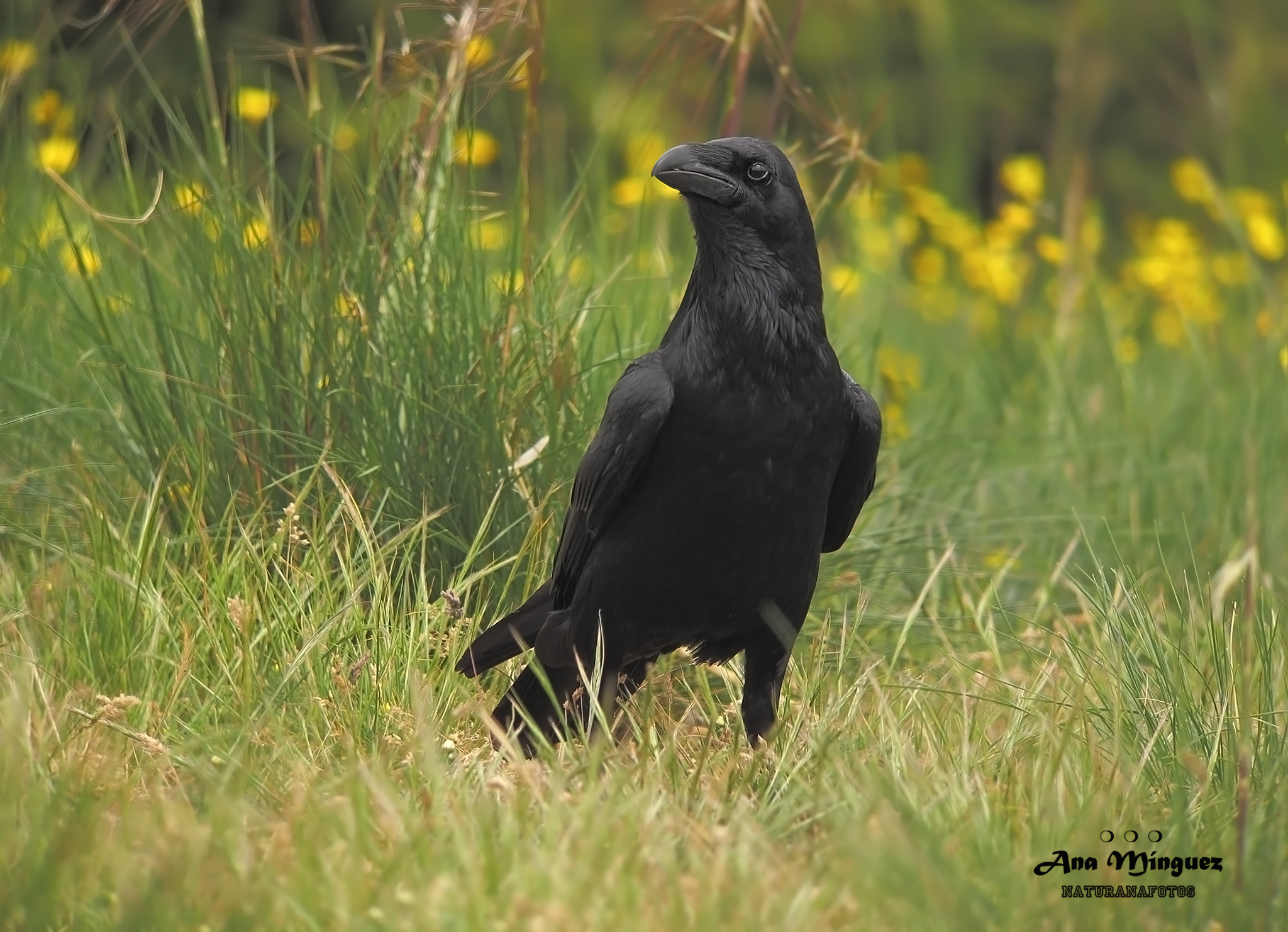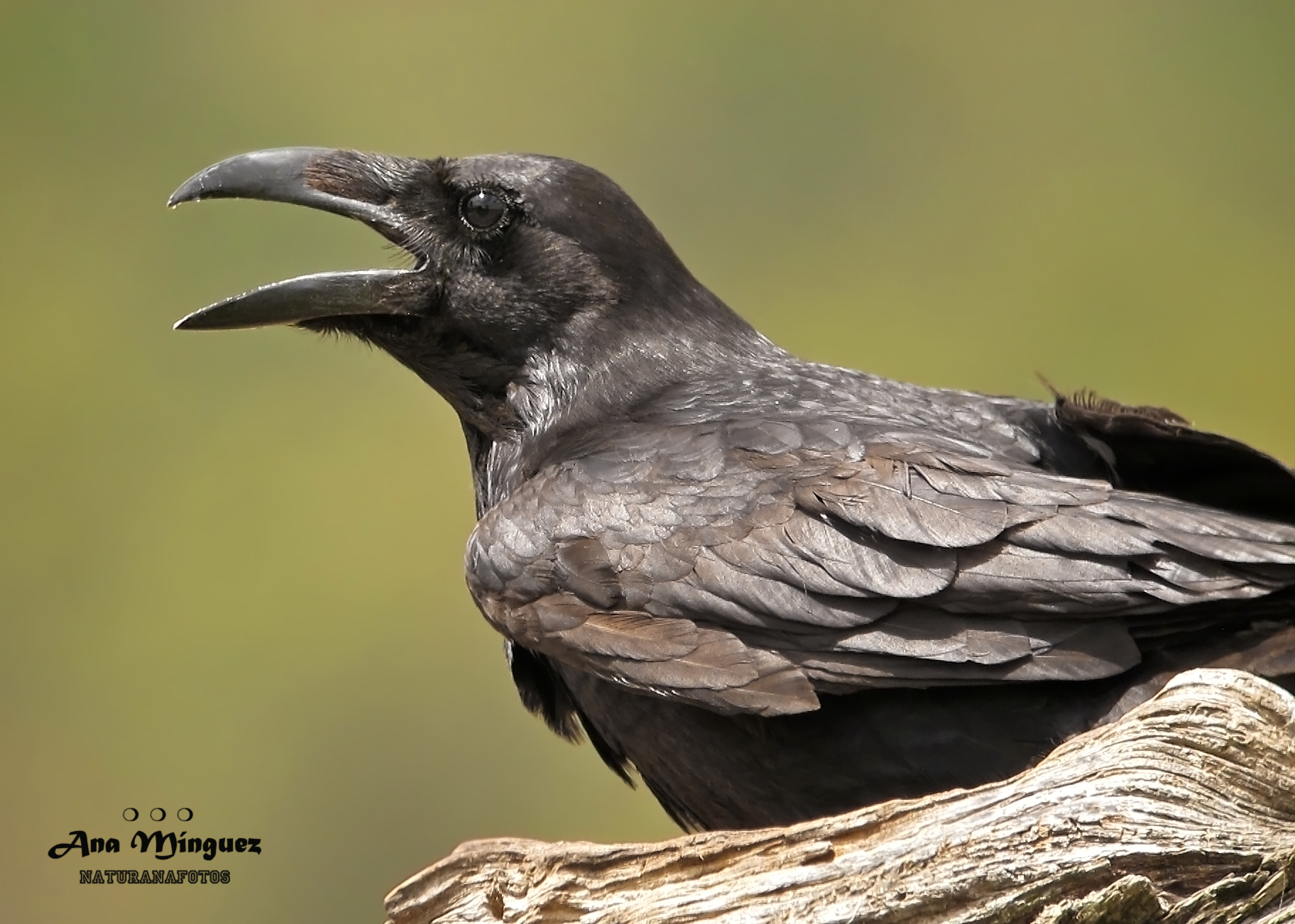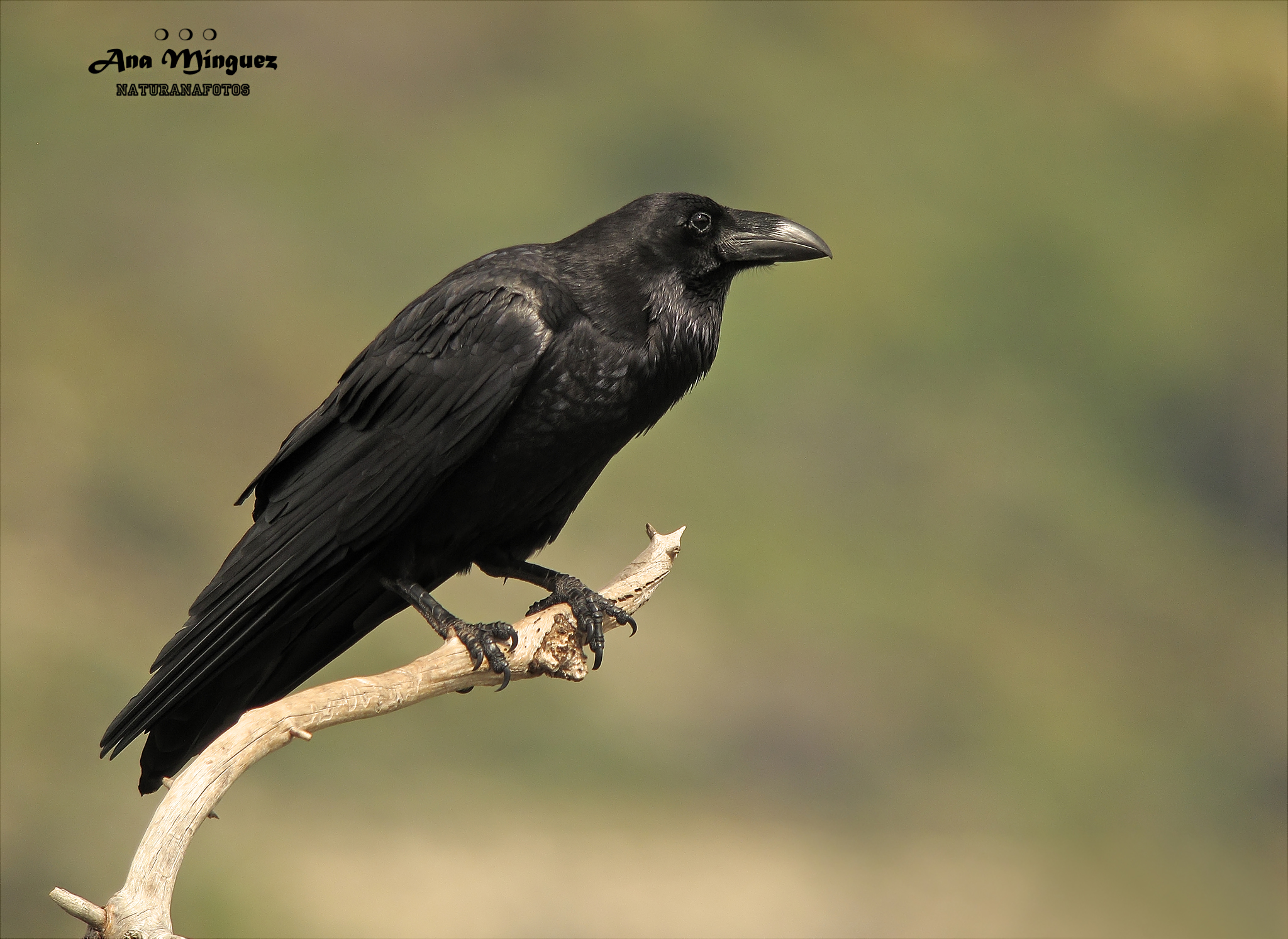The Wisdom of Ravens

By Jose Luis Gallego, environmental communicator (@ecogallego)
On cold winter mornings, the vineyard lies shrouded in low-lying mist. White frost trims the path, and the landscape is steeped in a vague sense of unease. And then, suddenly, a raspy cry cuts through the fog. Amateur field biologists will immediately recognize the call: hoarse and unmistakable, it belongs to the raven, known in the scientific community as Corvus corax, one of the largest birds found on the Iberian Peninsula.

A raven in the field. Photograph of: Ana Mínguez
Soon the bird emerges from the clouds – large, majestic, black from head to tail. With a slow flap of its wings, the raven rises on a thermal: a buoyant column of warm air that allows flying birds to float with their wings extended. Suspended in the sky, the raven circles upward with spread wings, scanning the gradually brightening, early morning horizon.
Maligned in mythology, popular sayings, and rural folklore, the raven is in fact one of Europe’s most extraordinary birds and currently among the continent’s most endangered species. Ornithologists estimate that raven populations have been cut in half over the past two decades, including entire territories where the species has disappeared completely. For this reason, observing a raven in the wild is one of the most prized encounters in any ornithologist’s field book.
Sturdy and compact in appearance, the raven is the largest European corvid. It sports glossy jet-black plumage with an occasional iridescent purple shimmer. The raven has a small head and a thick neck, but what is most distinctive, especially when seen in silhouette, is its enormous bill: stout, robust, and almost exaggeratedly large compared to the head. Ravens have a ruff of feathers on the neck, which is especially prominent in older males (male ravens can live 70 years or more). They measure around 65 centimetres in length and boast a wingspan of almost 1.5 metres. They can weigh more than 1.5 kilos.

A raven in a tree. Photograph of: Ana Mínguez
Ravens are territorial, sedentary birds commonly found along the edges of rivers or lakes. They live in rocky or forested areas with a preference for the crags and gullies of river valleys in mid- to high-altitude mountain areas. Their high, slow, circling flight can turn surprisingly acrobatic during the mating season when males begin to court females. As mentioned earlier, ravens make a distinctive sound – a deep, dry caw that can be heard across great distances.
They feed on literally anything that crosses their path. Given their impressive size and powerful bill, ravens can behave like raptors and catch all sorts of animals: from birds and their eggs to lizards and large insects. Given their taste for voles, ravens are a welcome sight for farmers, because they help keep these rodent populations in check, thereby preventing damages to crops. They also eat carrion and all kinds of wild fruits and seeds.
In terms of behaviour, the raven is among the world’s most famous species and often credited with surprising levels of wisdom. For this reason, the bird has found its way into the myths, traditions, and religious rites of different cultures around the world. In Norse mythology, for example, representations of the god Odin show him with a pair of ravens, one perched on either shoulder. They are called Huginn and Muninn – “thought” and “memory” – and every morning at dawn, they fly around the world gathering information for Odin about everything that is happening.

A raven on a tree branch. Photograph of: Ana Mínguez
In Spain, however, the raven’s image has often been associated with bad omens and witchcraft. This, along with its classification as a pest during the mid-20th century, made the raven one of the country’s most persecuted birds, so much so it almost vanished from our countryside completely.
Beyond the many raven-inspired legends, ethologists have scientifically proven that ravens are very social and gregarious animals, exceptionally intelligent and blessed with an incredible memory. They even display a surprising ability to mimic the human voice. Ravens can reproduce entire sentences and engage in what we could call “conversations” with people who have raised them in captivity.
At this time, ravens face several serious threats, including the illegal use of poisons in agricultural fields, poaching (ravens are a protected species), collisions with overhead power lines and electrocutions in high-voltage transmission towers, as well as the spread of industrial agriculture and large-scale irrigated monoculture farming.
